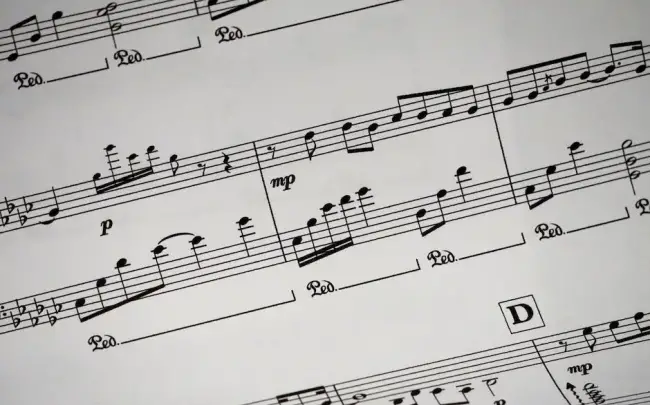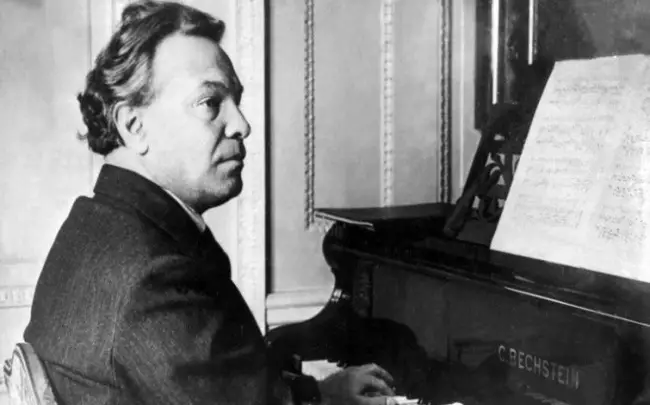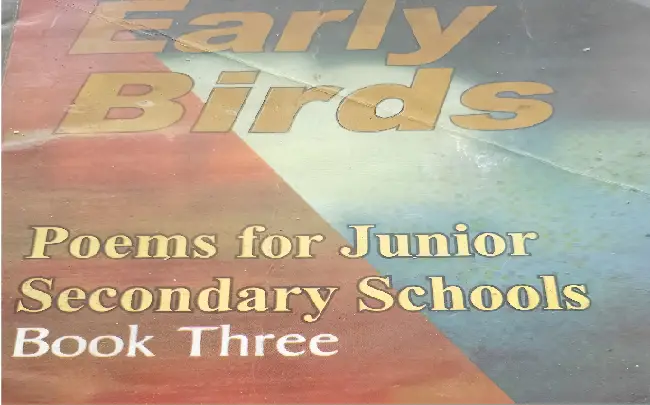In the vast expanse of classical music, the genre of tone poems remains a captivating aspect. Conceptualised as symphonic pieces, these compositions portray a unique merge of literature, art, and emotions with traditional musical elements. This synthesis births a riveting stream of music aimed at bringing alive non-musical sources and ideas.
Predominantly flourished in the period of romantic music, tone poems have acquired significance under the deft artistry of composers like Franz Liszt. This art form presents a fascinating study when we delve into the fabric of its composition, the visionaries who championed it, their famous works, and the impactful legacy it leaves behind.
What Are Tone Poems: Definition And Origin

While exploring the realm of symphonic music, one cannot overlook the exquisite and expressive depth of tone poems. This remarkable art form, known in its early stage as a symphonic poem, is an integral facet of program music and encapsulates the fusion of poetry and musical composition which originated in the lap of the romantic era.
The tone poem can be perceived as a single continuous orchestral work, which, in essence, is not restricted within the bounds of conventional symphonic forms. What sets a tone poem apart is its narrative element; this piece of music seeks to tell a story, depict characters, or convey the mood and environment of a specific scene unperturbed by the demand of following a cyclic or conventional structural form. Rather than focusing on recurring musical themes, the tone poem flows like an unfurling literary narrative or the sweep of a painter’s brush.
The philosophy of the tone poem orbits around the ideology of ‘programme’, as foreseen by Franz Liszt, the maverick Hungarian composer. Liszt’s unbound creative genius and intrepid experimentation led to the conception of the tone poem in the mid-19th century. He became the pioneering figure in championing this characteristically new form of music, helming thirteen tone poems which set the stage for this genre. The compositions such as “Les Préludes” and “Mazeppa” served as the conduit that relayed Liszt’s ideals about the unity of the arts- a polyglossia of the ears, eyes, and mind.
Evolution of the tone poem did not cease with Liszt and his contemporaries. Subsequent composers, including Richard Strauss, Antonin Dvorak, and Jean Sibelius, advanced this form further, each bringing their unique touch to the genre. For instance, the German composer Richard Strauss‘ work relies profoundly on a process known as thematic transformation, his tone poem “Don Juan” being a vivid example of his deft artistry.
In the sphere of tone poems, one must also acknowledge the stunning work of British composer Ralph Vaughan Williams, whose piece “Fantasia on a Theme by Thomas Tallis” underlined the narrative liberties afforded by the form, reaching into lofty, celestial sonorities.
Nonetheless, the intricately woven link between poetry and music in the concept of the tone poem does not advocate that the listener should be well-versed in either of these art forms for a wholesome experience. The central intent of a tone poem is to encourage the listener to summon imaginations, by intermingling soundscapes with literary themes or simply non-musical impulses.
Hence, defining the concept of the tone poem and tracing its origins is akin to trying to behold the beauty of an intricately carved statue from all dimensions. The tone poem is not just a culmination of symphonic art and poetic charm, but also promotes the significant contribution of imaginative expressiveness, setting it apart in the veil of varied musical genres.
Composition And Structural Analysis of Tone Poems
Diving deeper into the heart of tone poems, it is important to elaborate on the elements and structures that orchestrate the soulful harmony of this distinct musical genre. A tone poem, referred to as a symphonic poem, possesses a unique soundscape that romances between music and literature, engaging the audience in an ethereal way akin to no other musical form. Delving into the same, one can discern two key building blocks: The Thematic Transformations and the Single Movement Structure.
Thematic transformations, also termed as ‘thematic metamorphosis’, play a vital role in defining the musical landscape of the tone poem. The practice began with the illustrious compositions of Franz Liszt who indulged in the technique of reiterative melodies, modulating tonal centres and altering rhythmic structures. This musical narrative was fit for dramatic representation, thereby matching the poetic ethos a tone poem aims to embody. Thematic transformations allow the themes to evolve and adapt, based on the narrative progression, setting an emotive backdrop to the unfolding story.
The scope of the tone poem lies vastly in its single-movement framework, straying away from the conventional multi-movement structure of a traditional symphony. This structure promotes the seamless integration of various melodies, harmonies and rhythms, providing a robust support to the narrative being conveyed. Indeed, it is the infallible marriage of the music and narrative that defines a tone poem.
Contrasting themes, another key element, are often used to articulate aspects of the poem or story that is being expressed such as opposing forces, inner turmoil or contrasting philosophies. The Sonnet, for instance, is a classic example of a tone poem showcasing contrast between two themes. The striking use of opposition aids in creating an escalating tension before it culminates into a molten resolution, mirroring the journey that every story, every poem endeavours to portray.
Continuing the exploration of the composition of a tone poem, it’s pertinent to mention the importance of the orchestration in these compositions. A tone poem often calls for a large orchestra, incorporating a wide variety of instruments. The rich articulation of different tonal colours and textures drawn from these instruments aids to the creation of vivid moods, landscapes, and characters all linked to the narrative at hand.
Last, but not least, an underlining trait that revolves around the spirit of a tone poem is the freedom with form. A tone poem doesn’t strictly adhere to classical structures like sonata form or rondo form. It favours free-form composition, which perfectly aligns with the comprehensive, boundless narrative that it intends to depict. The tonal richness of a tone poem emerges as an auditory canvas upon which the composer freely paints the picturesque scenes of the poem or story being told.
Indeed, the beauty of a tone poem lies in its complexity, its insistence on capturing the intangible reverie of a poem through tangible melodies and harmonies. It’s a genre that sways between music and literature, constantly marrying the two to create a musical portrait that echoes the eloquence of a narrative. Indeed, the elements and structures that define the composition of a tone poem contribute significantly to its artistic depth and emotive panorama.
Prominent Composers Of Tone Poems

Moving forward in our exploration of the genre, we encounter two composers that are, perhaps, less well-known than Liszt or Strauss, but have nonetheless made significant contributions to the evolution of the tone poem. These composers are Ottorino Respighi and Béla Bartók.
Italian composer Ottorino Respighi, best known for his orchestral music, particularly the symphonic poems Pines of Rome, Fountains of Rome, and Roman Festivals, skilfully manipulated tone colour and orchestration to create vivid, almost edifying pictures in sound. Respighi, given his profound understanding of orchestral timbre, could craft lush harmonies that transformed a simple melodic line into an intricate narrative tapestry.
The Pines of Rome, for instance, is a symphonic poem where Respighi uses the orchestra to paint a vibrant panorama of Rome, filled with bustling market squares, imposing catacombs, and of course, the quiet majesty of towering pines under a lustrous moon. The Fountains of Rome provides another poignant example of his mastery of tonal colour, transforming the orchestra into glistening pools of water, dancing jets of fountains, and intimate moments of silent reflection.
Béla Bartók, the eminent Hungarian composer, brought to life the essence of Eastern European folk melodies and dances in his symphonic poems. In “Kossuth,” Bartók tells the story of Lajos Kossuth, a national hero in Hungary’s struggle for independence. The narrative not only echoes political turmoil but also explores the Hungarian musical idiom’s characteristic rhythmic drive, modal melodies, and persistent ostinato patterns.
In particular, Bartók’s use of the orchestra exemplifies his genius. He employs masterful orchestration techniques in “The Wooden Prince,” infusing deep textural complexity to mirror the intricate plot of the ballet. “The Miraculous Mandarin,” is a one-act pantomime ballet that demonstrates Bartók’s capability to create tension and horror by developing and transforming thematic materials.
Influence and Legacy of Tone Poems
Influences of Tone Poems on Music Culture
In understanding the impact of tone poems on the broader landscape of music and culture, we must observe their essential aesthetic fingerprints. Arising from the late Romantic era, tone poems evolved to yield a profound influence, not only over subsequent eras of classical music, but notably, into popular music and media.
Resonating through time, tone poems have shaped the narrative lens through which we experience music, cultivating a richer emotional engagement. The narrative capacity of tone poems invigorates its unique appeal. Pieces such as Ottorino Respighi’s “Pines of Rome” and Béla Bartók’s “The Wooden Prince” typify how tone poems can serve as a sensory conduit, translating dramatic narrative into an aural spectacle.
Through the profound manipulation of tonal colour and orchestration, tone poems offer vivid soundscapes. Bartók’s “The Miraculous Mandarin”, for instance, capitalises on orchestration techniques to construct atmospheric tension and reflexive horror, mapping intricate narrative plot points into accompanying sonic motifs.
The introduction of tone poems marked a shift in music from primarily social or religious functions to individual expression and storytelling – paving the way for contemporary art forms to interweave narrative into their structural fabric. From film scores to video game soundtracks and performances arts, the conceptual and auditory lineage back to tone poems is discernible.
Tailoring to the psychology of their audiences, tone poems offer an opportunity for self-reflexivity, an immersive plunge into the unseen narrative depths of music. In being, they inspire contemplation and exploration. Respighi’s and Bartók’s works exemplify the creative latitude fostered by tone poems as a genre, allowing composers to craft psychoacoustic portrayals that engage the listener beyond a conventional sense.
Furthermore, tone poems challenge the accepted musical order in their free-form structure, thematic transformations, and thoughtful orchestration. They shape music as we understand it today, influencing exploration, expression, and experimentation. This can be clearly observed in modern musical forms such as prog rock, ambient electronica, and experimental soundscape genres, commonly recognized for their expressive deviations.
Moreover, the impact of tone poems stretches into music’s academic sphere. Their structural complexity and artistic depth have elbowed their way into extensive critical musicology discourse, underpinning many contemporary theories and research investigations.
Extending beyond the confines of music, tone poems permeated broader cultural echelons. That art forms – cinema, literature, painting – would come to adapt the narrative-driven methodology of tone poems speaks to their significant cultural footprint. In essence, the embedded narrative inherent to tone poems ushered in an era wherein art sought to tell a story, not merely portray form.
Conclusion
In summary, the tone poem – once an innovative twist on the symphonic tradition – has echoed through generations to become an integral part of our music and cultural landscape. Its harmonious balance of narrative, musical expression, and emotive depth reverberate in art and culture alike, showcasing the indomitable power of music to escort the imagination on boundless journeys.The narrative of tone poems serves as an engaging journey through different forms of classicism, canvassing pioneering composers and their magnificent works.
Besides the sheer auditory delight, these compositions remain deeply embedded within the cultural tapestry, influencing multiple forms of art, literature, and cinema. The endearing qualities of these pieces do not merely rest within their Romantic period origins, but continues to reverberate into the contemporary artistic and musical landscape. Tone poems hence encapsulate the quintessence of human experience and creativity, segueing seamlessly from the past into the present, in an enduring show of its cultural and artistic relevance.




